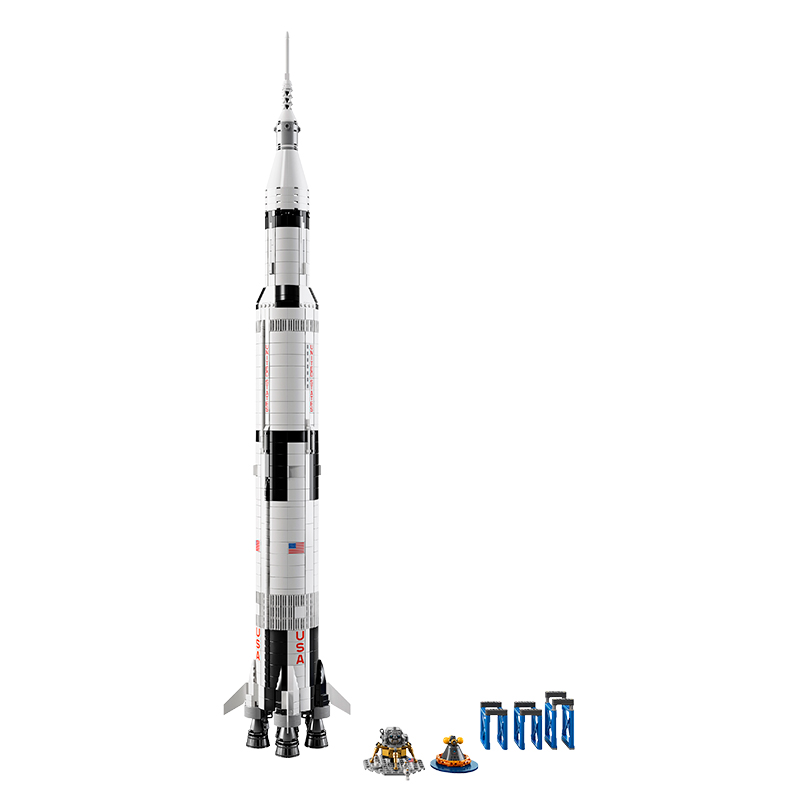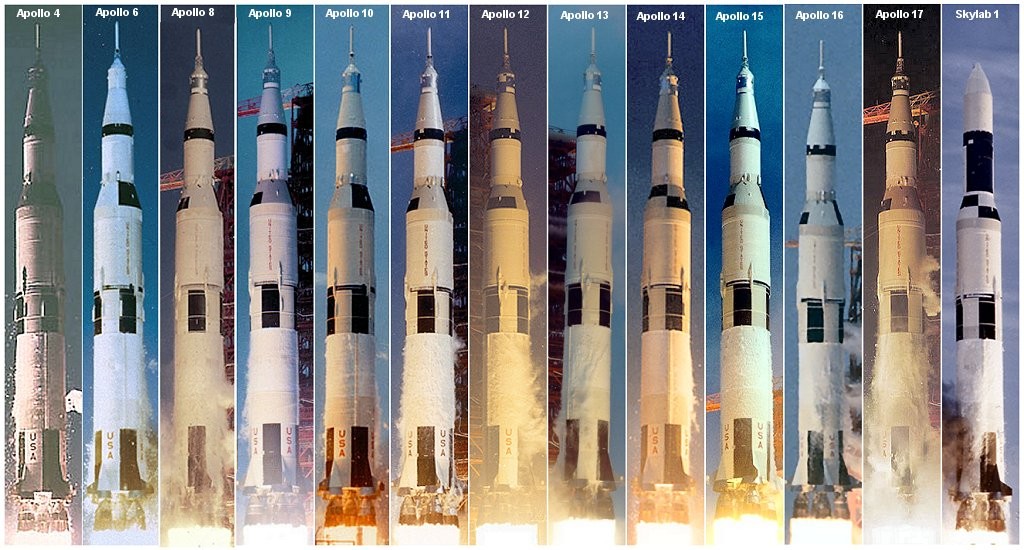The new Lego Ideas Saturn V set has been selected and will be hitting shops shelves shortly, and it is BIG!
The new Lego Ideas set is apparently the biggest set that Lego has made as part of the Ideas range, and measuring around 1 metre high and containing 1969 (is this for real?) lego elements, it’s easy to see why.

Lego Ideas Saturn V Design
The beautifully recreated rocket can be displayed as a whole, or in separate parts depending on your preference. The set even contains small stands that can support the sections for displaying the model horizontally.

The front section even has a nose cone that breaks away to reveal a mini version of the moon lander, a very nice touch for any NASA or space lover.

This set is pretty awesome, and being that the mars rover was the first LEGO Ideas set that I bought, this one is definitely on my radar!
The LEGO Ideas NASA Apollo Saturn V (Set number 21309 ) was designed by the hugely talented LEGO Ideas members Felix Stiessen (saabfan) and Valérie Roche (whatsuptoday).
Official Description
Make history with the LEGO® NASA Apollo Saturn V, the first rocket to put people on the Moon! Build the 3 stages of this stunning meter-high rocket and display it on the stand or launch into orbit. Offload the S-IC and S-II sections, dock the lunar lander with the command service module, and complete a successful Moon landing mission!
The set also includes 3 stands to display the model horizontally, 3 new-for-June-2017 astronaut microfigures for role-play recreations of the Moon landings, plus a booklet about the manned Apollo missions and the fan designers of this educational and inspirational LEGO Ideas set.
Easter Eggs
The Saturn V rocket that famously put man on the moon for the first time, was the Apollo 11 mission. Neil Armstrong and pilot Buzz Aldrin were the first humans to set foot on the moon, and they did so in 1969, so is it a coincidence that this set has 1969 pieces? 😉
About the Master Builders
The below is from the official announcement of the Saturn V rocket from LEGO Ideas Blog:
Felix and Valérie’s collaboration was guided by a shared passion for space exploration
Despite never meeting in person, space and LEGO fans Felix Stiessen and Valérie Roche beat the odds with their wonderfully brick built version of the iconic Apollo rocket. It was a collaboration that tested their skills in numerous ways but, as it turns out, the long-distance collaboration also proved to be a significant benefit to their project, as Felix states “there were often times when one of us abandoned the project for a few weeks and came back to it later; however, thanks to the fact that it is a collaborative project, it was always the case that one of us continued making progress on the project and re-motivated the other“.
Felix and Valérie’s collaborative spirit was tranferred to the LEGO design team as well, who took over the project once it was approved, in order to ensure it lived up to LEGO quality standards. Two designers, Michael Psiaki and Carl Thomas Mirriam, motivated by their enthusiasm for space, teamed up to bring the final model to life. “We were actually not asked. I was so excited when I heard that the project was potentially going to happen, and told Carl about it because I knew he was also a space fanatic. We decided it would be really cool to work together since it is such a big mode, so we approached the Ideas team about helping develop the product”, Michael said.
History of Apollo and Saturn V
The Saturn V (spoken as “Saturn five”) was an expendable rocket used by NASA between 1967 and 1973. It was used for the most famous launches, such as Apollo 11, the one that put humans on the moon, and Apollo 13, the one where everything went wrong (watch the film).
To clarify, the Saturn V model number is the name given to the design of the rocket itself, whereas the Apollo missions i.e., Apollo 11, is a mission number that used the Saturn V rocket. Below is an image of the Saturn V in each of its missions, courtesy of Wikipedia.

The three-stage liquid-fueled super heavy-lift launch vehicle was developed to support the Apollo program for human exploration of the Moon and was later used to launch Skylab, the first American space station. The Saturn V was launched 13 times from the Kennedy Space Center in Florida with no loss of crew or payload. As of 2017, the Saturn V remains the tallest, heaviest, and most powerful (highest total impulse) rocket ever brought to operational status, and holds records for the heaviest payload launched and largest payload capacity to low Earth orbit (LEO) of 140,000 kg (310,000 lb), which included the third stage and unburned propellant needed to send the Apollo Command/Service Module and Lunar Module to the Moon.
The largest production model of the Saturn family of rockets, the Saturn V was designed under the direction of Wernher von Braun and Arthur Rudolph at the Marshall Space Flight Center in Huntsville, Alabama, with Boeing, North American Aviation, Douglas Aircraft Company, and IBM as the lead contractors.
To date, the Saturn V remains the only launch vehicle to launch missions to carry humans beyond low Earth orbit. A total of 15 flight-capable vehicles were built, but only 13 were flown. An additional three vehicles were built for ground testing purposes. A total of 24 astronauts were launched to the Moon, three of them twice, in the four years spanning December 1968 through December 1972.


